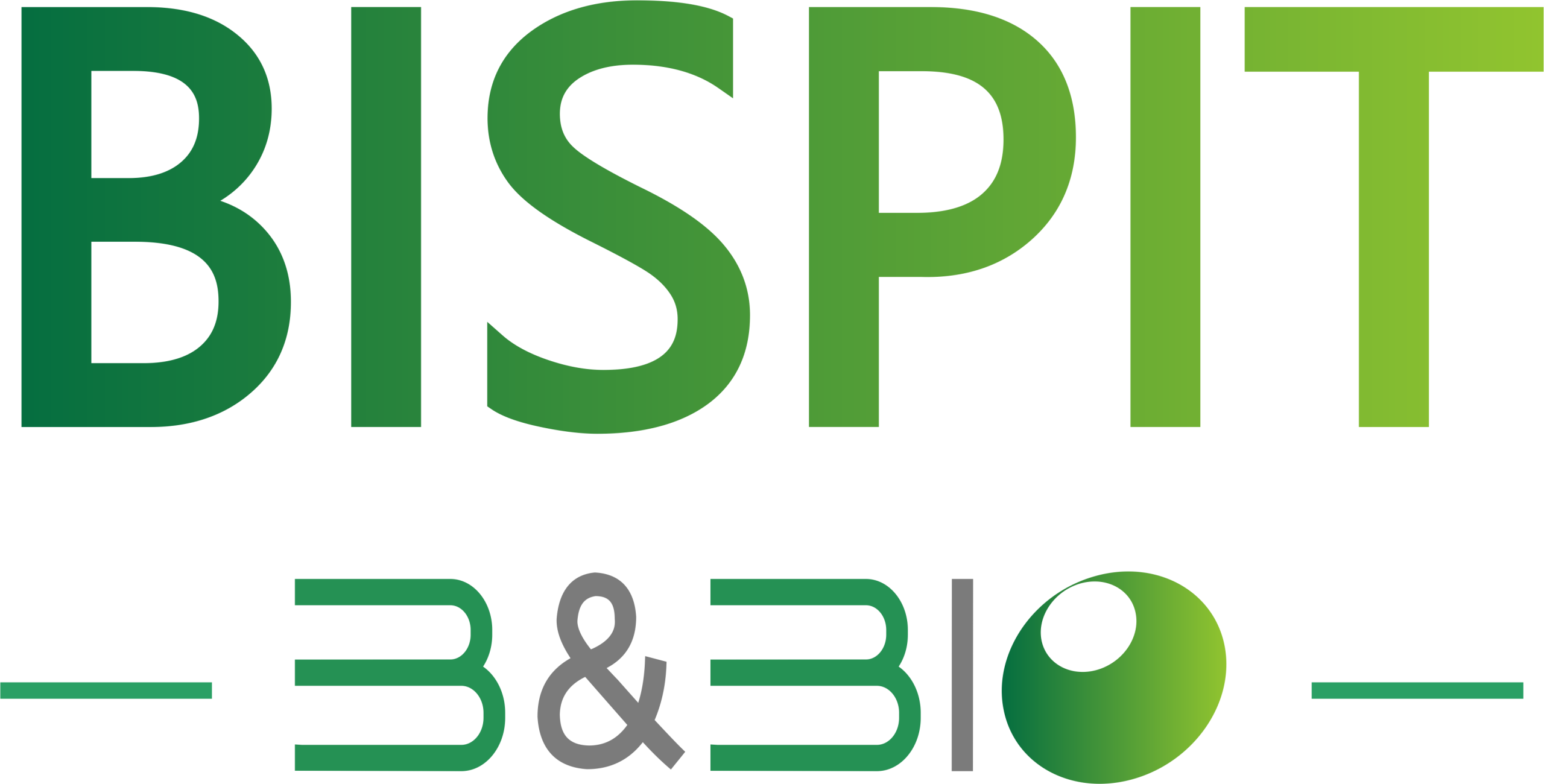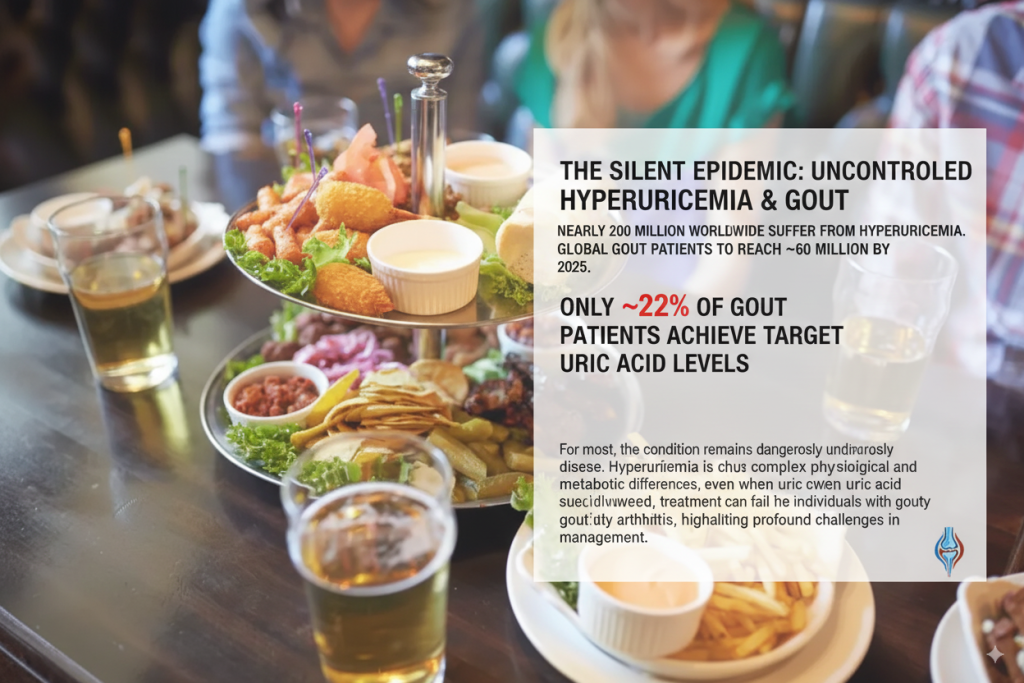
Introduction: An Uncontrolled Global Epidemic
Nearly 200 million people worldwide suffer from hyperuricemia, and the vast majority are silently progressing towards gout. A study in The Lancet projects that the global number of gout patients will approach 60 million by 2025. Yet, a staggering reality persists: only about 22% of gout patients manage to keep their uric acid levels within the target range. For most, the condition remains dangerously uncontrolled.
Hyperuricemia is a chronic metabolic disease. Due to complex physiological and metabolic differences between individuals, even when uric acid is successfully lowered to normal levels, treatment can fail in some individuals with gouty arthritis, highlighting the profound challenges in managing this condition.
The Complex Physiology of Uric Acid Metabolism
The difficulty in treating high uric acid is rooted in our own biology. Uric acid in the body comes from two sources:
- 80% is endogenous, produced by the body’s own metabolic processes.
- 20% is exogenous, derived from the intake of purine-rich foods.
This dominance of internal production means that even the strictest diet can only go so far in managing uric acid levels. The final product of purine metabolism is uric acid, and its excretion is primarily handled by the kidneys. Any disruption in this metabolic chain—either an increase in production or a decrease in excretion—leads to hyperuricemia.
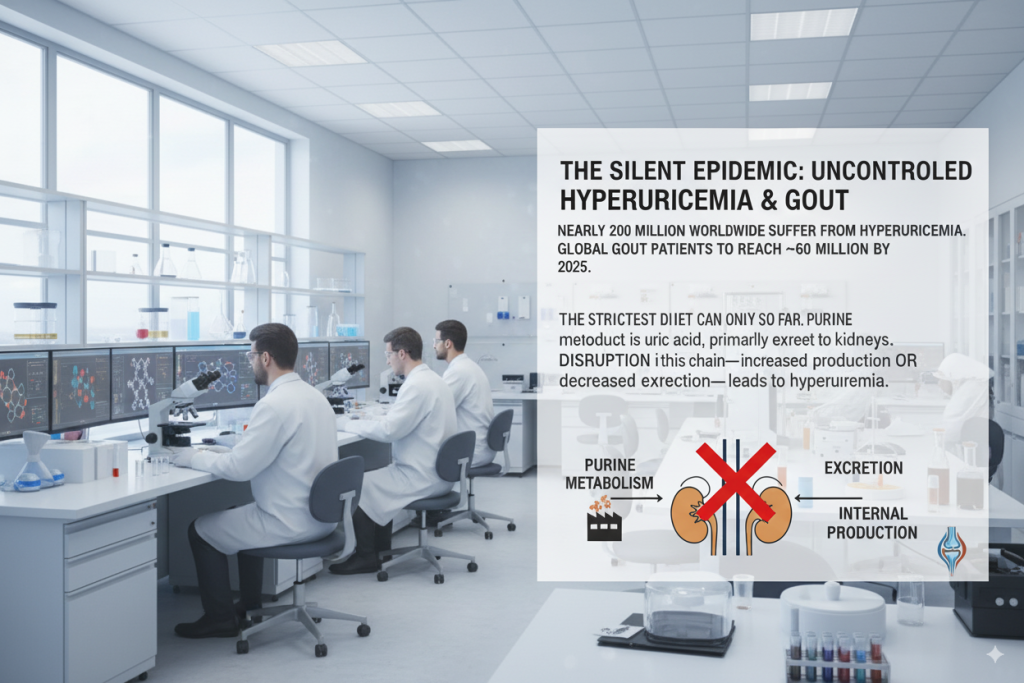
Several factors complicate this further:
- Aging: Kidney function and the ability to excrete uric acid naturally decline with age.
- Comorbidities: High uric acid is strongly correlated with other chronic, hard-to-cure conditions like hypertension, diabetes, and kidney disease, creating a complex web of health issues.
- Genetics: Genetic factors play a significant role in gout, predisposing individuals to metabolic abnormalities that are difficult to reverse with single-treatment approaches.
A Growing Public Health Challenge
The global prevalence of gout ranges from 1% to 6.8% in various countries, with a clear upward trend in nations like the United States, Canada, Denmark, Sweden, and South Korea.
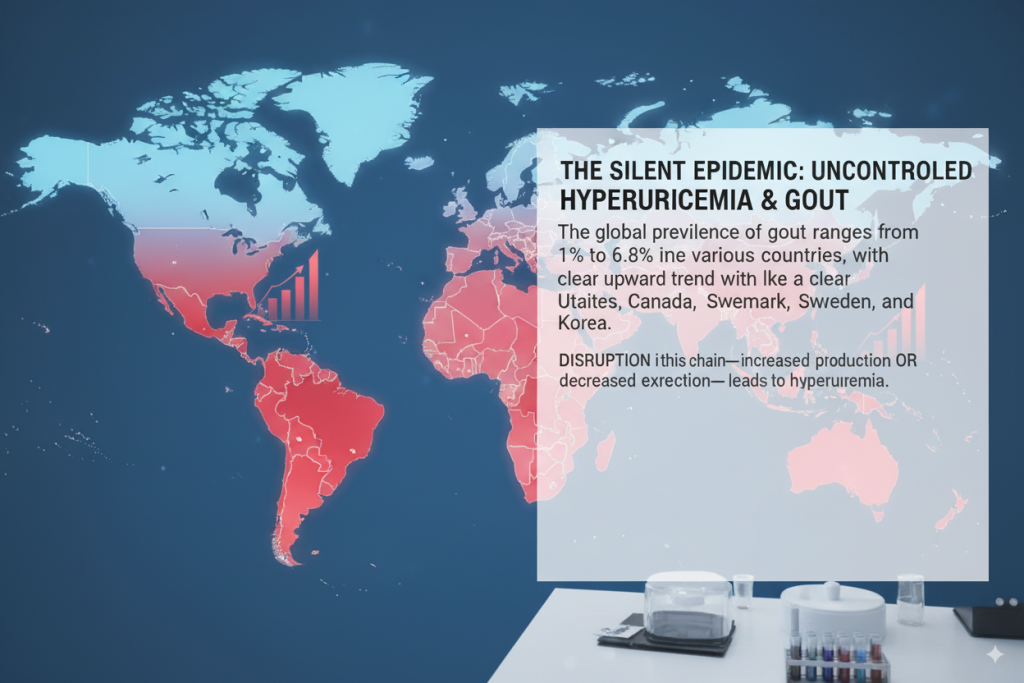
- Age and Gender: Gout prevalence increases sharply with age. In Canada, the rate is as high as 11.8% in the 70-79 age group, compared to less than 1% for those aged 50-59. While rare in pre-menopausal women, the prevalence in women aged 55 and older can reach 4.64%.
- Regional Disparities: Data shows that hyperuricemia is more common in developed nations like the U.S. (21.4%) and Japan (25.8%) compared to developing countries such as Saudi Arabia (8.4%) or Thailand (10.6%). This trend is closely linked to rising obesity rates, dietary shifts, and an aging global population.
The Hurdles and Misconceptions of Traditional Treatment
Modern medical treatments for high uric acid face significant limitations and common misunderstandings.
1. Drug Limitations and Side Effects:
While drugs like allopurinol and febuxostat effectively lower uric acid, they don’t fix the root metabolic problem and come with risks:
- Allopurinol: Can induce skin rashes and, in some cases, kidney damage.
- Febuxostat: Carries a controversial cardiovascular risk, leading to a “black box warning” in the U.S., Canada, and its country of origin, Japan.
- Benzbromarone: A first-line drug in some regions, it has been withdrawn from the market in the European Union due to risks of severe liver toxicity.
2. Strategic Errors in Treatment:
- Aggressive Dosing: Some patients, eager for quick results, start with high doses of medication. This can cause a rapid drop in uric acid, triggering a painful phenomenon known as “dissolution pain” as crystals mobilize, which can worsen the condition temporarily.
- Over-reliance on Diet: Other patients focus exclusively on diet, which can lead to nutritional deficiencies without significantly impacting the 80% of uric acid that is internally produced.
A Global Gap in Gout Management
The severity of gout is often underestimated, leading to significant gaps in care worldwide.
- Poor Control Rates: A study in Hong Kong found that only 29.9% of patients reached their target uric acid level, and zero patients with tophaceous gout (gout with nodules) met their target.
- Inadequate Primary Care: A 2007 UK study found that gout treatment in primary care was often substandard and inconsistent with international guidelines. An Australian study revealed that only 22.4% of gout patients in primary care achieved their target, and about half were never even tested for their uric acid levels over a 5-year period.
- Underutilization of Treatment: Despite a 3.9% prevalence of gout in the U.S. (affecting 9.2 million adults), a 2015-2016 study in Arthritis & Rheumatology found that only about one-third of these patients were receiving urate-lowering therapy. This is compounded by a global shortage and uneven distribution of rheumatologists.
The Vicious Cycle: Gout and Kidney Complications
Persistent high uric acid creates a dangerous feedback loop with the kidneys. Excess uric acid excretion can form crystals, leading to kidney stones and chronic interstitial nephritis, which causes progressive kidney damage. In severe cases, massive crystal deposits can cause an acute blockage, leading to acute uric acid nephropathy and even acute kidney failure.
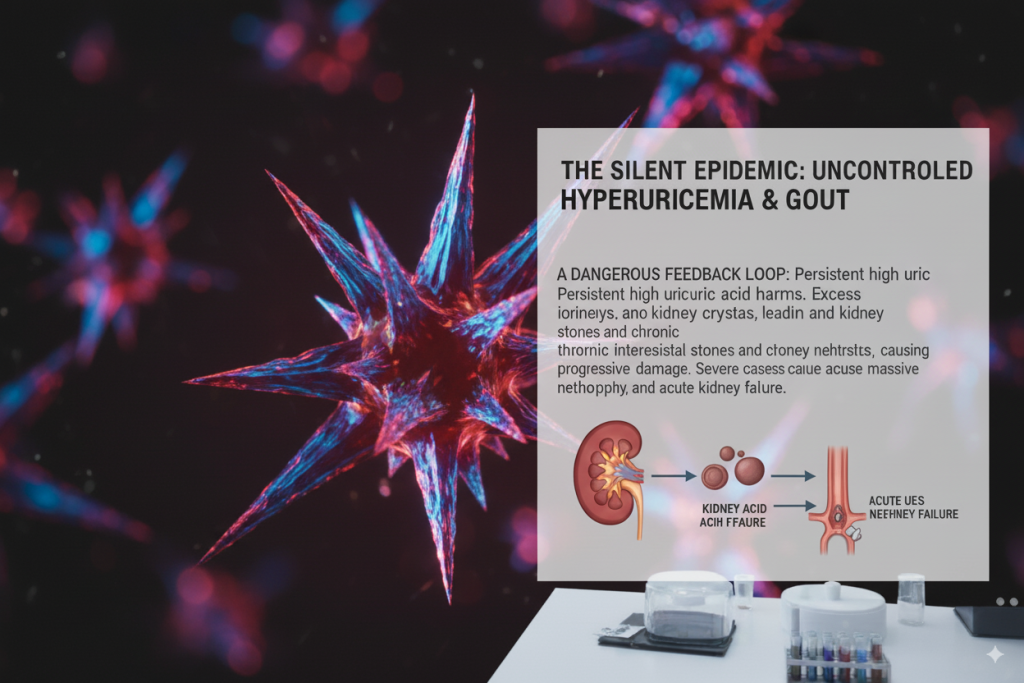
As kidney function worsens, the ability to excrete uric acid further declines, exacerbating the hyperuricemia and making treatment even more difficult.
A New Strategy: Targeting the Three Core Pathways
Recognizing these challenges, modern research is focused on the three core pathways of gout: overproduction of uric acid, under-excretion of uric acid, and the resulting inflammatory response.
BISPIT has developed its 3310 series based on these three pathways, using a multi-ingredient, natural approach to avoid the side effects of conventional drugs.
- Inhibiting Production: Key ingredients like Celery Seed are included in sufficient doses to help inhibit the overproduction of uric acid at its source.
- Promoting Excretion: The addition of Himalayan White Thorn, a botanical salt, helps promote the kidneys’ ability to excrete uric acid.
- Controlling Inflammation: The high-concentration liquid formula of Gout Attack 3310 B is designed to quickly counteract inflammatory flare-ups, and long-term use can reduce the frequency of acute gouty arthritis attacks.
Conclusion: The Need for Long-Term Management
High uric acid is a chronic disease that demands a long-term health management plan. This includes regular monitoring of uric acid levels and kidney function, and adjusting treatment under professional guidance. For now, a proactive, comprehensive, and scientifically grounded approach to management is the best strategy for conquering this stubborn condition.
